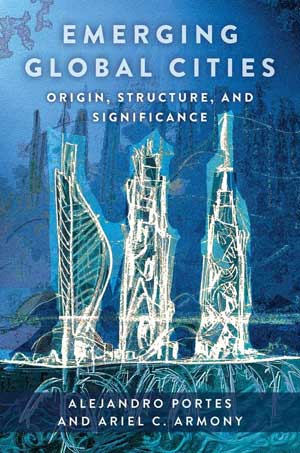
The authors – which include a number of contributors beyond simply the two senior academics credited on the front cover – eschew the simplicity of paradigms such as World-Systems, which organizes the world into the haves of the “Global North”, or the world’s “Core”, and the have-nots of the “Global South”, or the world’s “Periphery”. The authors of the book also, to their credit, raise an objection to the verbose obscurantism and bad-faith arguments inherent to academic Critical and Postmodern theories of Urban and Economic Geography; however, while the authors of this book successfully problematize existing scholarship and writing on global cities, they do very little on their own to identify significant patterns and commonalities that allow a city to capitalize on its international appeal – or, for that matter, prevent a city from doing so. As such, the reader is often left to fill in the blanks on their own.
A reader can notice, for example, that the three successful global cities discussed in the book – Miami, Dubai, and Singapore – are those that have embraced diversity; in the case of Miami not entirely overcoming a legacy of segregation, but nevertheless building on the success of its Cuban refugee population. By contrast, the unsuccessful cities – Sao Paulo, Lagos, and New Orleans – are still burdened by severe demographic inequality.
Additionally, the examples in the book raise a challenge to the notion of a liberal project in which free-market economics, demographic diversity, and multi-party democracy exist side-by-side as components of the same advancement towards the future; the authors, for example, challenge the notion of Dubai as a shining star of free-market neoliberalism; rather, its economy has been carefully centralized and planned by the government. Miami, for all its cosmopolitan reputation, still displays evidence of segregation in that black Americans are relegated to specific suburbs and neighborhoods on the city’s fringes. Singapore is well-known for its authoritarian technocracy.
The most compelling aspect of this volume is the manner in which the authors present narrative histories of these global cities. The authors, for example, challenge the popular notion of the United Arab Emirates’ Al Maktoum family as a sort of clan of Arab Beverly Hillbillies who rose from rags to riches after striking oil; rather, they already benefitted from the strategic location of Dubai as a port city, and successfully played the hand of Britain as a colonial power in their favor. The history of Singapore, particularly Lee Kuan Yew’s fight against Communism, encourages curiosity in the reader. In the chapter on Miami, the chapter’s authors appear somewhat biased, suggesting that Miami’s 1980s crime wave was overblown by the news media; however, by suggesting this, the authors fail to build a case for how Miami overcame this reputation and established itself as a major global city. Additionally, the chapter addresses but largely skirts around Miami’s geopolitical significance, given its proximity to Cuba and its prime location for international smuggling and irregular migration.
In these observations are the building blocks for a new theory of global cities. However, the authors fail to integrate these observations into their work in a way that proposes anything particularly new. As a primer on global cities or as a work available to reference, this book serves its function. However, those seeking an original unified theory may wish to look elsewhere.